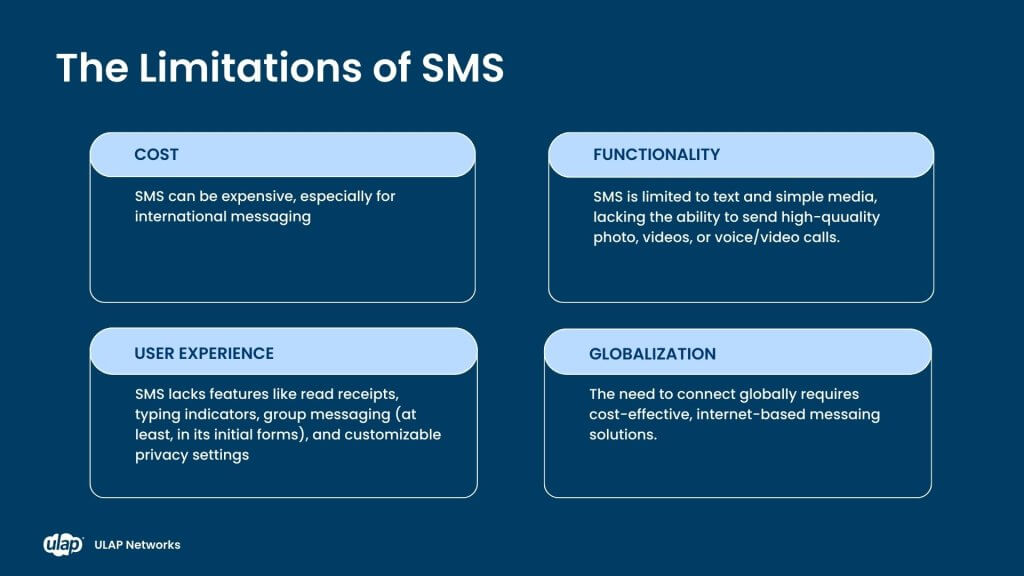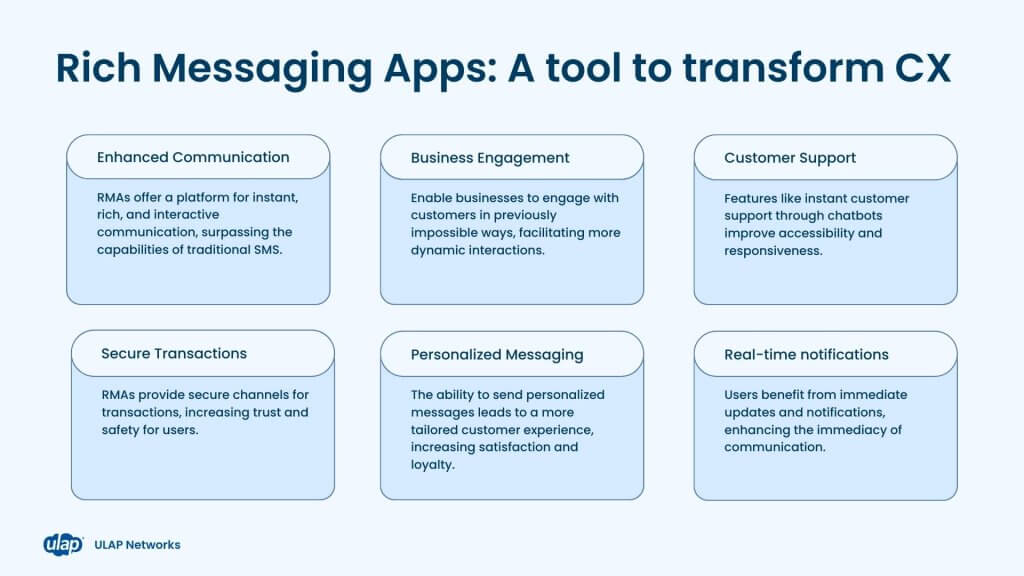Beyond SMS: Enter the World of Rich Messaging Apps
The history of WhatsApp and other RMAs is a fascinating reflection of the evolution of communication technology, especially in the context of smartphones.
RMAs have significantly impacted CX by offering features beyond SMS capabilities, allowing sending and receiving text, photos, videos, documents, and location and voice calls.
RMAs also offer encryption that SMS lacks, which is ideal for enterprise cloud environments. SMS also involves costs per message or depends on network provider bundles, depending on the user’s plan and country. The limits of SMS led to the development of RMAs.

Today, there are a host of RMAs, including WhatsApp Business, Facebook Messenger, WeChat, Apple Business Chat/iMessage, and Google Business Messages.
Customer adoption is impressive. According to research firm Statista, in 2022, the number of global consumers and companies using WhatsApp Business was estimated to surpass 1.26 billion users.
CPaaS Platforms Take SMS & RMAs To A New Level
Though SMS and RMAs are excellent communication tools, they require constant modifications and customisation for enterprises depending on the marketing and support situation. Besides that, SMS and RMAs offer excellent opportunities to mine customer data and analytics and significantly increase customer engagement.
That’s where CPaaS helps.
CPaaS consolidates SMS and RMA apps into one dashboard, providing businesses an integrated platform to orchestrate omnichannel strategies rather than managing individual channels. Companies that offer CPaaS solutions include Webex Connect, Twilio, Bird (formerly MessageBird), Plivo, Sinch and Infobip and Vonage.
Better still, CPaaS handles an impressive range of backend delivery infrastructure, automated workflows, analytics, and more. It provides actionable data and tools around two-way messaging absent in standalone RMAs. Some provide the ability to integrate with the leading RMAs like Apple Message, Facebook Messenger, and Google Business Messenger.
Other benefits include:
- CPaaS offers a flexible development environment with software toolkits and APIs to customize communication products/services.
- It enables developers to build messaging capabilities into apps versus limited configuration with RMAs alone.
- Designed for enterprise-scale communication needs across large customer bases. It also offers more mission-critical guarantees around security, latency, uptime.
In summary, CPaaS solutions augment the capabilities of individual rich messaging apps to power more streamlined, scalable, and sophisticated B2C communication strategies for businesses with advanced requirements.
AI Rising: The Relentless Pursuit of Better CX
AI is becoming integral to CPaaS to enhance customer engagement within the SMS and RMA environment.
SMS and RMAs generate abundant conversational data from real-time, high-frequency customer messaging interactions. Whether customers are texting questions about an order or communicating needs over WhatsApp, every message input provides valuable insights.
When this data is integrated into a CPaaS platform leveraging machine learning algorithms, robust analysis unlocks a goldmine for businesses. Predictive models identify intent and patterns in customer language. Natural language processing classifies the topics, sentiments, and semantics mentioned across conversations over time.
Powerful segmentation and analytics around messaging data fuel hyper-personalization. Customers feel understood and heard when they receive tailored content or offers meeting their needs without having explicitly asked. AI remembers the context of prior discussions, mimicking human memory.
Chatbots leverage NLP to parse inquiries and handle common requests automatically through SMS or rich messaging apps. They personalize interactions, gauge customer satisfaction with sentiment analysis, recommend products, and answer questions seamlessly. Virtual assistants feel more helpful by retrieving and responding with specific details using the customer’s same natural language. Humans step in easily when needed.
Overall, AI augmentation enables companies to scale mass personalization through messaging. The right message, right channel, and right time become possible. Combining smart automation with the trust of SMS & RMAs creates sustainable one-on-one engagement between brands and customers.
AI is no longer an option. One way or another, AI will find its way into every area of the enterprise, especially in the contact centre. It’s still early in the game. The AI hype cycle will be with us for some time to come. In the meantime, CPaaS companies will continue to refine and develop new solutions to harness the power of ML and NLPs. These models will become more refined from expanding datasets (driven by SMS and RMAs), resulting in more meaningful tools to improve CX.
Companies that seize this opportunity and are willing to experiment with AI in an agile way could gain significant revenue, profits, and a loyal customer base. There’s no going back. AI is here to stay.




